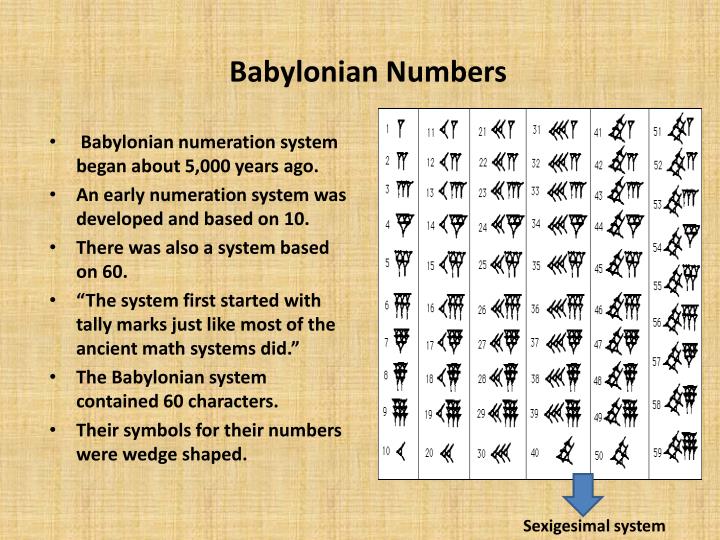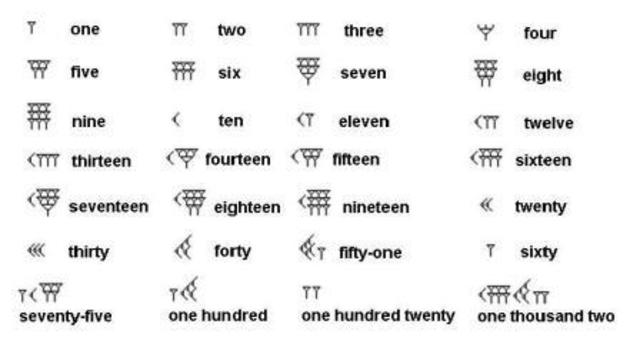

#60 IN BABYLONIAN NUMERALS PLUS#
The ancient Greeks knew all primes larger than three can be written as a product of six plus or minus one, 6n ± 1. Instead, the choice followed logically from their number theory: the conception of the natural numbers –‘the number line’- as an infinite modulus 6 spiral, and all the prime numbers larger than three are neatly ordered congruent to 1 and 5 modulus 6. Not the ordinary need for a number with many divisors as is the consensus among mathematicians for the choice of sexagesimal. Order in the prime numbers is what they had in mind when base 60 was chosen. Heavenly, maybe most of all, because one doesn’t have to be a Gauss in order to feel like a Gauss in number theory. Heavenly arranged geometry and arithmetic simultaneously, through the standard Babylonian algorithm for multiplication: ab = (a + b/ 2)^2 – (b – a/ 2)^2, with which the Babylonians were routinely ‘completing the square’ many millennia before Al-Khwarizmi was born. And for any Pythagorean triple (abc), the productof the two non-hypotenuse legs (ab) is always conveniently divisible by 12, and the product of all three sides (abc) is a multiple of 60. Heavenly geometry because the factors of 60 coincide with the smallest primitive ‘Pythagorean’ triple 3^2 + 4^2 = 5^2. Regular Babylonian numbers are of the form 2^a x 3^b x 5^c. Heavenly higher arithmetic for division by all composite numbers constructed from the factors of 60 is replaced by multiplication with the reciprocal of these numbers.

For unravelling a number into its factors, it is all about the beginning, about pulling on the right pair of sexagesimal threads. The greater diversification of prime numbers allows one to unravel a given number into the combination(s) of two threads from which it is knitted. Moreover, for the fact it works equally well in the other direction: in dividing a number into its factors. Heavenly higher arithmetic for the ease and speed of multiplication of prime number.

This standardization of prime numbers in 16 categories arranges for ‘heavenly’higher arithmetic and geometry.


 0 kommentar(er)
0 kommentar(er)
